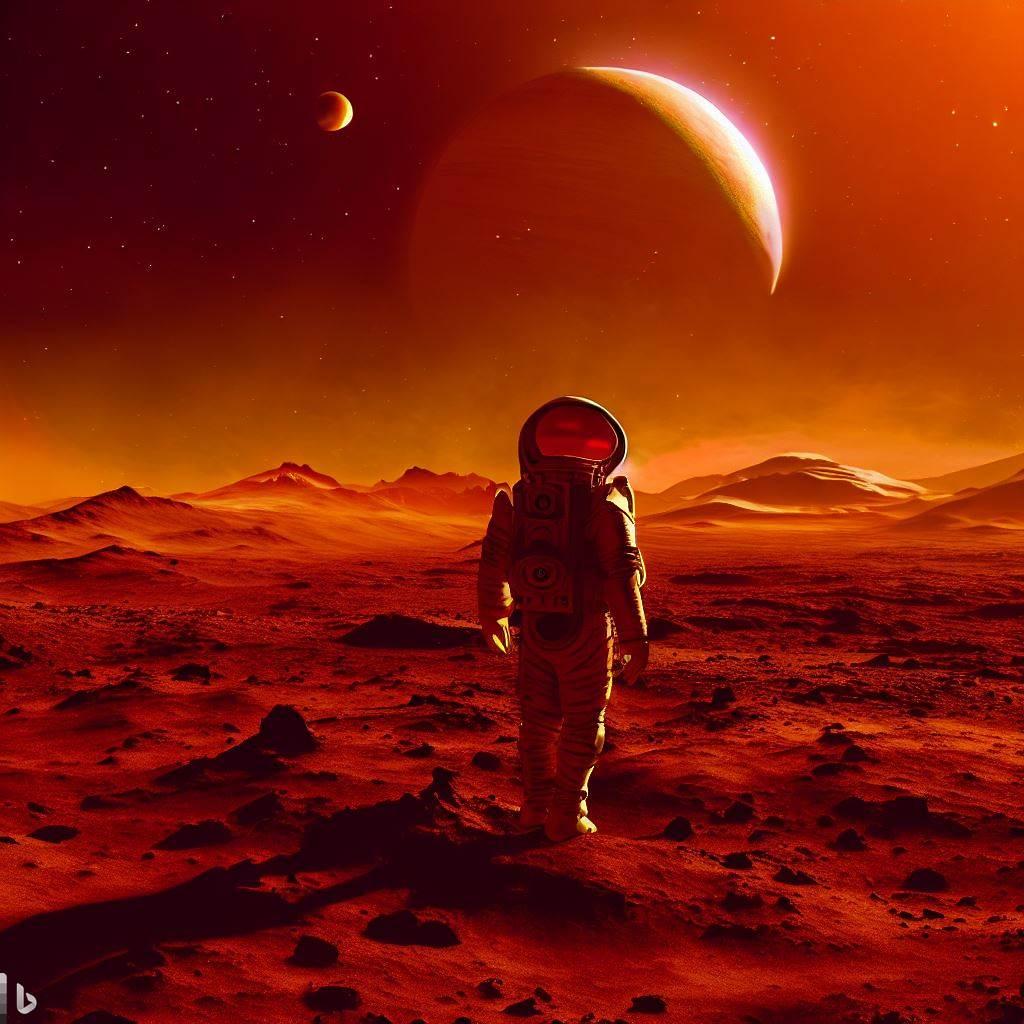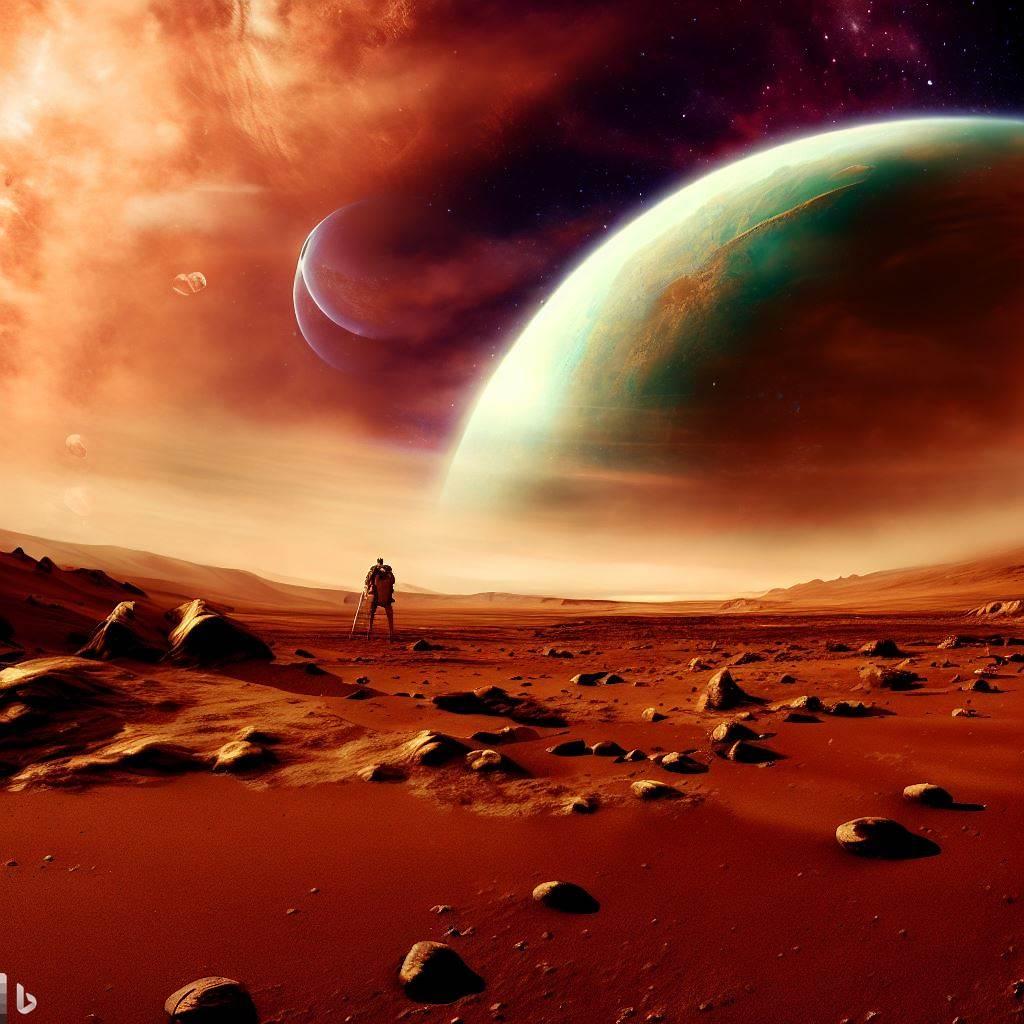Life on Mars and Beyond – NASA
For centuries, humanity has gazed up at the night sky and wondered—are we alone in the universe? Are there other lifeforms living on planets orbiting distant stars, or even on objects in our own solar system? While the search for extraterrestrial life remains ongoing and inconclusive, scientists have found compelling evidence that simple microscopic life may have once existed on Mars and may still be found underground today. Let’s explore the possibility of life on Mars and beyond.

Mars: The Most Promising Candidate for Past or Present Life
Of all the planets and moons in our solar system, Mars has drawn the most attention in the search for life beyond Earth. This is because Mars appears to have once had conditions suitable for supporting microbial life—liquid water on its surface in the ancient past. Spectrographic analysis of Martian rocks and soil has identified iron-rich clays and sulfates that could only form in water. Images from orbiters show extinct river valleys and deltas attesting to a warmer and wetter Mars billions of years ago.
Moreover, examinations of Martian meteorites found on Earth reveal evidence of ancient Martian microbes may have lived in them. Some meteorites contain magnetite crystals with strange geometric properties most easily explained by biological activity. Preserved biosignatures like pyramidal carbon structures and bacterial-like fossils have also been detected. While controversial, these findings suggest microbial life may once have thrived on the surface of early Mars until the planet dried out as its atmosphere thinned.
Today, life on Mars may still survive deep underground where liquid water could exist in subsurface aquifers warmed geothermally. Future missions aim to search for biomolecules and microfossils in Martian rocks and subsurface ice that could prove ancient or extant Martian life existed. With its proximity and similarity to early Earth, Mars stands as humanity’s best bet for discovering past or present life elsewhere in the solar system.

Potential Habitability of Icy Moons
Beyond Mars, several moons orbiting the gas giants Jupiter and Saturn have generated excitement as potential habitats for extraterrestrial life. Europa, one of Jupiter’s largest moons, harbors a vast subsurface ocean beneath its icy crust that may contain more liquid water than Earth’s oceans combined. The ocean is kept liquid by tidal heating from Europa’s proximity to Jupiter. Venting water plumes seen erupting from Europa’s frozen surface provide evidence life could exist in its underground seas.
Titan, Saturn’s largest moon, also has a thick nitrogen-rich atmosphere and liquid hydrocarbon lakes on its frigid surface that could serve as a solvent for biological chemistry. Complex organic molecules form naturally in Titan’s atmosphere through interactions between methane and sunlight, raining down as molecular precursors essential for life. While conditions on the surfaces of Europa and Titan are far too cold for familiar Earth life, unique extremophiles could potentially thrive in their buried oceans and lakes.
biosignatures on exoplanets
The Kepler space telescope’s planet-hunting efforts showed that a huge number of exoplanets likely exist in the Milky Way galaxy. Future space telescopes aim to analyze the atmospheres of Earth-sized planets orbiting in star’s habitable zones to search for possible biosignatures like oxygen, methane, and other atmospheric compounds that could indicate biological activity. While direct imaging and sampling of exoplanets are currently impossible, detecting gases that defy purely geologic explanations would strongly suggest the presence of life beyond our solar system. The search is on to discover life’s incredible ability to adapt to diverse environments across the cosmos.
Overall, the recent scientific evidence pointing to habitable conditions on Mars in the past and possibilities for life in its subsurface or beneath the icy crusts of moons like Europa and Titan make the prospect of discovering extraterrestrial life quite plausible. While confirmation remains challenging today, rapidly advancing technology will continue narrowing the odds and bringing humanity ever closer to answering life’s most profound question—are we alone in the universe? The future promises great advances in our search to discover life in extreme environments across the solar system and beyond.

What are some of the challenges in confirming the existence of past or present life on Mars?
Here are some of the key challenges in confirming the existence of past or present life on Mars:
- Contamination concerns – It’s difficult to rule out the possibility that any signs of past or present life detected are actually from microbes transported to Mars from Earth via spacecraft. Strict sterilization practices are required.
- Preserving and interpreting biosignatures – Fossilized or chemical signs of life need to be well-preserved to allow identification and withstanding harsh Martian surface conditions makes this challenging. Interpretation of possible biosignatures also has room for uncertainty.
- Accessing subsurface environments – Where life may still exist underground today cannot be directly sampled and requires drilling equipment to reach potentially habitable aquifers and retrieve samples. This adds technological complexity.
- Detecting active microbial life – Even if signs of ancient life are found, detecting and characterizing living Mars microbes would be extremely difficult as their number and activity levels are likely very low.
- Limited instrumental capability – Future rover and lander missions have constrained payload mass and onboard scientific instruments, which may not have necessary sensitivity and resolution to definitively identify Martian biosignatures.
- Global versus local conditions – Understanding if conditions were only temporarily habitable in certain regions or long-lasting planet-wide has implications in the search. Global habitability would increase chances of detection.
- Martian surface erosion – Billions of years of chemical weathering, oxidation, radiation exposure and dust deposition may have erased or altered earlier biosignatures beyond recognition over time.

Finding unambiguous proof will require continued exploratory efforts to overcome these obstacles through advanced in-situ instruments and sampling strategies. Confirmation will likely take several successive missions.


Nice post. I learn something totally new and challenging on websites
I really like reading through a post that can make men and women think. Also, thank you for allowing me to comment!
bahçe makineleri, motorlu testere, motorlu tırpan, çim biçme makinası, budama makası, akülü testere, benzinli testere, ms 170, ms 250,bahçe el aletleri satışını yapan firmamız kredi kartına taksit fırsatları ile şimdi sizlerle.
Malatya Karaca Ticaret | NURKAN KARACA Malatya stihl bayi,Malatya stihl servis,Hızar motoru,Motorlu testere,Motorlu tırpan, Çim biçme makinası,Malatya karacalar,Malatya stihl, nurkan karaca Malatya’nın en köklü Stihl bayilerinden olan Nazım Karaca ve torunu Nurkan Karaca şimdi e-ticaret platformlarında faaliyet yürütmektedir. Mağazamız, hem stihl satışı hem de stihl servisliğini yapmaktadır.
Lenipa Toptan Cep Aksesuarı telefon aksesuarları,telefon aksesuar toptan,telefon aksesuarlari toptan,toptan telefon aksesuar,toptan telefon aksesuarlari,cep tel,cep telefon,cep telefonu,en ucuz telefon,iphone 13 kılıf,iphone 13 pro kılıf,iphone 13 pro kılıfları,iphone 13 pro max kılıfları,iphone 13 pro max kılıfı,iphone kılıfları,telefon aksesuarları,telefon kılıfları,ucuz telefon,en ucuz akıllı telefon,en ucuz cep tel,en ucuz cep telefonu,en ucuz iphone 13,iphone 13 aksesuar,iphone 13 telefon kılıfları,iphone 13 şarj aleti,telefon ekran koruyucu,telefonlar ucuz,toptan telefon kılıf,ucuz akıllı telefon,ucuz cep tel,ucuz cep telefonu,ucuz telefon modelleri,şarj kılıfları,13 pro kılıfları,13 pro max en ucuz,akıllı cep telefonu en ucuz,akıllı telefon en ucuz,akıllı telefon kılıf,akıllı telefon ucuz,cep aksesuar,cep iletişim,cep tel en ucuz,cep tel kulaklık,cep telefon aksesuar,cep telefon ekran koruyucu,cep telefon ucuz,cep telefonu aksesuar toptan,cep telefonu aksesuarları,en ucuz 13 pro max,en ucuz akıllı cep telefonları,en ucuz iphone 13 pro,en ucuz iphone 13 pro max,en ucuz iphone telefon,en ucuz telefon modeli,en ucuz telefonlar iphone
Gerçekten detaylı ve güzel anlatım olmuş, Elinize sağlık hocam.
bahçe makineleri, motorlu testere, motorlu tırpan, çim biçme makinası, budama makası, akülü testere, benzinli testere, ms 170, ms 250,bahçe el aletleri satışını yapan firmamız kredi kartına taksit fırsatları ile şimdi sizlerle.
There is definately a lot to find out about this subject. I like all the points you made
Ambalaj SepetimMikrodalga yemek kapları,Sızdırmaz kaplar,Çorba kase ve kapaklar,Suşhi yemek kabı,Şamua kese kağıdı ,Yağlı kese kağıdı ,Dürüm kese kağıdı ,Kagit çantalar,Hamburger kutuları ,Fast food kutuları,Pipetler,Peçete ve mendiller,Gıda eldiveni,Doypack kilitli posetler
Malatya Karaca Ticaret | NURKAN KARACA Malatya stihl bayi,Malatya stihl servis,Hızar motoru,Motorlu testere,Motorlu tırpan, Çim biçme makinası,Malatya karacalar,Malatya stihl, nurkan karaca Malatya’nın en köklü Stihl bayilerinden olan Nazım Karaca ve torunu Nurkan Karaca şimdi e-ticaret platformlarında faaliyet yürütmektedir. Mağazamız, hem stihl satışı hem de stihl servisliğini yapmaktadır.
Çok işime yaradı bende bunu nasıl yapacağımı araştırıyorum. Paylaşım için teşekkür ederim.
Malatya Karaca Ticaret | NURKAN KARACA Malatya stihl bayi,Malatya stihl servis,Hızar motoru,Motorlu testere,Motorlu tırpan, Çim biçme makinası,Malatya karacalar,Malatya stihl, nurkan karaca Malatya’nın en köklü Stihl bayilerinden olan Nazım Karaca ve torunu Nurkan Karaca şimdi e-ticaret platformlarında faaliyet yürütmektedir. Mağazamız, hem stihl satışı hem de stihl servisliğini yapmaktadır.